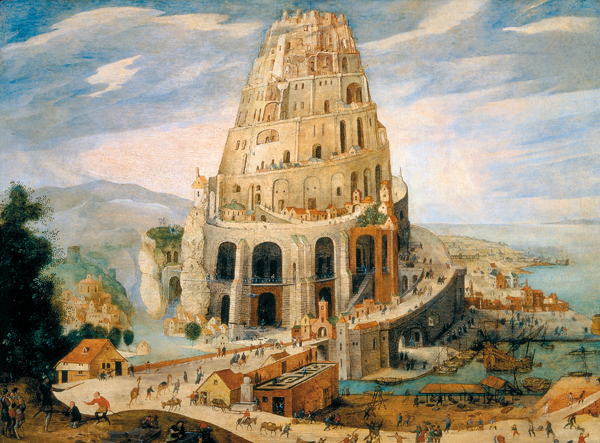Image Details

Galerie de Johckheere, Paris, France/Bridgeman Art Library
The Tower of Babel, rising from the plain in this 17th-century painting by Flemish artist Abel Grimmer, stands both as a symbol of man’s hubris and as an emblem of language—and naming—itself. According to Genesis 11, in the days after the Flood, humankind decided to “make a name” for itself by building a tower that would reach the heavens. Fearing that nothing would stop their hubris, God descended to earth, scattered the people across many lands, and confused their language so that they could no longer communicate (and plot) against him. The tower came to be known as Babel, Genesis 11:9 tells us, because God “confused” (balal) the languages there.
The biblical etymology suggests the importance of names in the Bible even though, in this case, it is a false etymology. Babel may derive from bab ’ilim, which means “God’s Gate” in the Babylonians’ own language, Akkadian.
